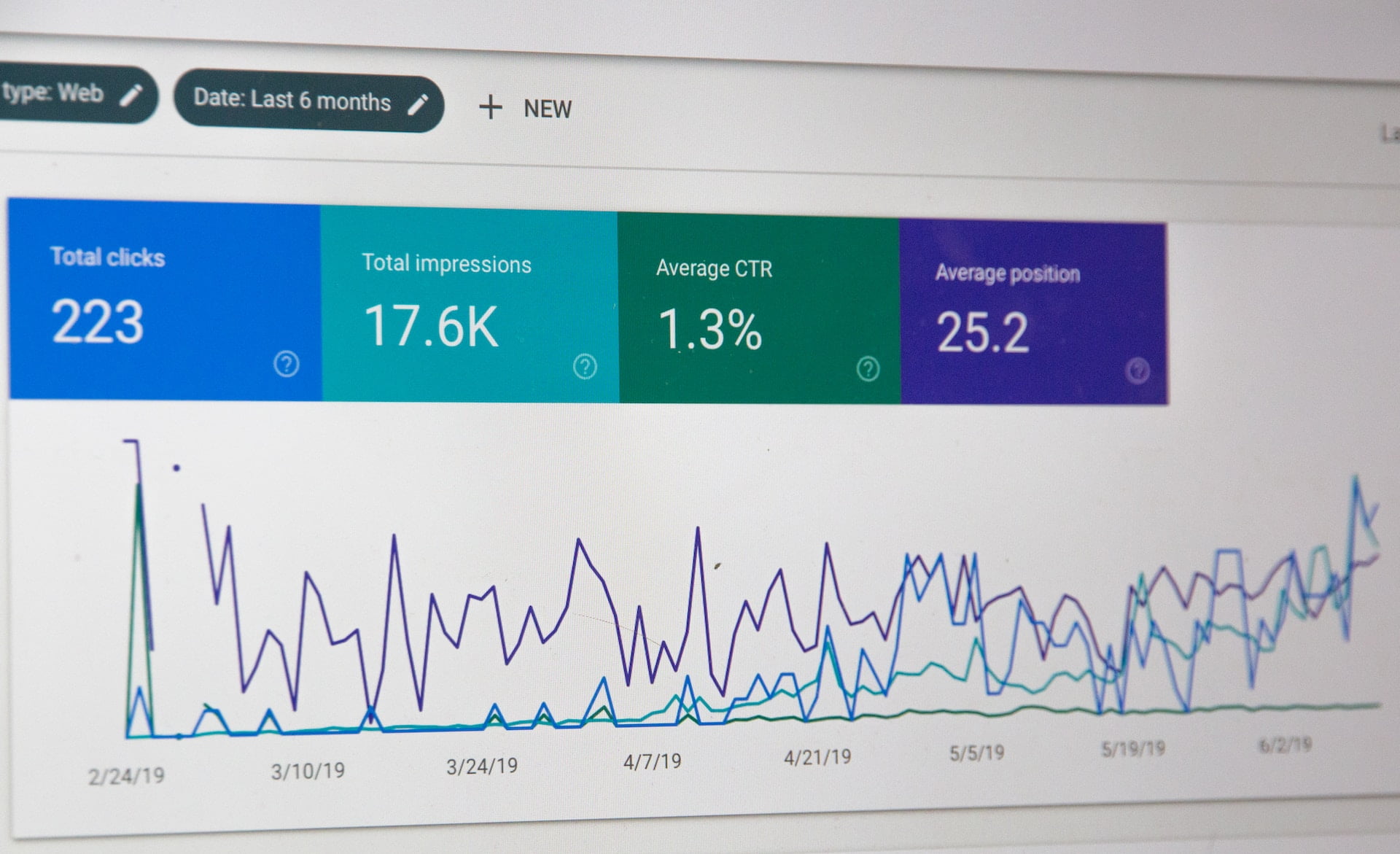The Basics of SEO
- Topics: Off-Page SEO, On-Page SEO, SEO KPIs, Technical SEO
- Resources: Digital Marketing Resources, SEO Resources
In the digital age, where information is just a click away, having a strong online presence is essential for businesses and individuals alike. Search Engine Optimization (SEO) plays a pivotal role in ensuring that your content gets discovered by search engines and, subsequently, by your target audience. In this comprehensive guide, we will delve into the world of SEO, exploring its principles, strategies, and best practices to help you harness the full potential of this indispensable tool.
Understanding the Basics of SEO
Before diving into the complexities of SEO, it’s crucial to grasp the basic concepts. SEO revolves around making your website more search engine-friendly, thereby increasing its chances of ranking higher in search results. This, in turn, can lead to more organic traffic.
Search engines use sophisticated algorithms to determine the relevance and quality of websites. These algorithms consider a multitude of factors, from keywords and content quality to user experience and backlinks. Your goal is to align your website with these algorithms to improve its search ranking.

What is SEO?
SEO is the process of enhancing the visibility of a website or webpage on search engine results pages (SERPs). The primary goal is to rank higher in organic (non-paid) search results, thereby increasing the likelihood of attracting organic traffic.
Why is SEO Important?
SEO is essential because it helps you:
- Boost Visibility
Appearing on the first page of search results can dramatically increase your website’s visibility.
- Drive Organic Traffic
SEO can attract high-quality, organic traffic, increasing the likelihood of conversions.
- Build Credibility
High search rankings often equate to authority and trustworthiness in the eyes of users.
- Stay Competitive
To stay ahead in a competitive digital landscape, you need SEO to keep up with or outpace rivals.
- Enhance User Experience
SEO isn’t just about search engines; it also focuses on improving the user experience, which can lead to higher engagement and conversions.
On-Page SEO: Optimizing Your Website
On-page SEO refers to the optimization of individual web pages to improve their rankings and visibility. It involves several key components:
Keyword Research
Keyword research is the cornerstone of any successful SEO strategy. It’s the process of meticulously analyzing and selecting the most relevant and effective keywords and phrases that your target audience is likely to use when searching for information, products, or services in your niche. This phase involves delving into the minds of your potential users, understanding their needs, preferences, and pain points. Through thorough keyword research, you not only uncover the language your audience speaks but also gain insight into their search intent. By identifying these key terms, you can strategically incorporate them into your content, allowing search engines to connect your website with user queries. However, keyword research is not a one-time task; it’s an ongoing process that evolves as user behavior and search trends change. Staying attuned to these shifts and adapting your keyword strategy accordingly is essential for maintaining and improving your search engine rankings over time.
-
The Importance of Keywords
Keywords are the foundation of SEO. They are the words and phrases that users type into search engines to find relevant information. Conduct thorough keyword research to identify the terms your target audience uses, and then strategically incorporate them into your content.
-
Long-Tail Keywords
Don’t overlook long-tail keywords, which are longer and more specific phrases. While they may have lower search volumes, they often lead to higher conversion rates because they are more targeted.
Content Optimization
Content optimization lies at the heart of effective SEO. It involves crafting high-quality, informative, and engaging content that not only resonates with your target audience but also aligns with the keywords and phrases identified through meticulous keyword research. The cornerstone of content optimization is to provide value to your readers. This means addressing their questions, solving their problems, or offering insights and information that genuinely meet their needs. However, it’s not just about creating compelling content; it’s about strategically incorporating your chosen keywords in a natural and contextually relevant manner. Keywords should seamlessly blend into your content, from headings and subheadings to the body text, without disrupting the flow or readability. By striking this delicate balance between valuable content and strategic keyword usage, you not only improve your search engine rankings but also ensure that when users find your content, it genuinely benefits them, increasing the chances of engagement and conversion.
-
High-Quality Content
Create high-quality, valuable, and informative content that addresses your audience’s needs and questions. Google rewards content that adds value to users.
-
Proper Keyword Usage
Integrate your chosen keywords naturally into your content, including headings, subheadings, and body text. Avoid keyword stuffing, which can lead to penalties.
-
Engaging Headlines and Meta Descriptions
Craft compelling headlines and meta descriptions that entice users to click on your search results.
User Experience and Site Structure
Certainly, optimizing user experience (UX) and site structure is crucial in the world of SEO. A user-friendly website not only keeps visitors engaged but also earns favor with search engines. Mobile optimization, the cornerstone of modern UX, ensures that your site is accessible and functional on various devices, which is essential given the prevalence of mobile browsing. Additionally, fast loading times enhance UX and positively impact search rankings, making it imperative to optimize your website for speed. An intuitive navigation system and well-placed internal links facilitate user exploration, improving engagement and increasing the chances of users finding valuable content. By paying attention to these UX and site structure aspects, you create a more appealing and efficient digital environment that both users and search engines appreciate, ultimately boosting your SEO efforts.
- Mobile Optimization
Ensure your website is mobile-friendly, as Google gives preference to mobile-responsive sites in its rankings.
- Page Speed
Optimize your site’s loading speed to improve user experience and SEO rankings.
- Navigation and Internal Linking
Create a clear and user-friendly website structure with easy navigation. Use internal linking to connect related pages and improve user engagement.
Off-Page SEO: Building Authority and Backlinks
Off-page SEO involves activities outside your website that can influence your rankings. A significant aspect of off-page SEO is building authority and acquiring backlinks:
Backlinks
Backlinks, also known as inbound or incoming links, are the backbone of off-page SEO. They are essentially digital endorsements from other websites, serving as a vote of confidence in your content and website. High-quality backlinks from authoritative and relevant sources carry substantial weight in search engine algorithms. Each backlink represents a digital reference to your content, indicating its credibility and trustworthiness. When search engines see numerous high-quality backlinks pointing to your website, they interpret it as a sign of your site’s authority and relevance, which can lead to improved search engine rankings. However, the key here is quality over quantity; a handful of authoritative backlinks can often have a more significant impact than a multitude of low-quality ones. Building a strong backlink profile should be a strategic and ongoing effort, involving tactics such as guest blogging, outreach, and content marketing to secure valuable links that boost your site’s SEO performance.
- What Are Backlinks?
Backlinks are links from other websites to yours. Search engines see them as votes of confidence, indicating that your content is valuable and trustworthy.
- Quality Over Quantity
Focus on acquiring high-quality backlinks from authoritative websites in your niche. A few high-quality backlinks can have a more significant impact than numerous low-quality ones.
- Guest Blogging
Guest posting on reputable websites in your industry is an effective way to earn backlinks and establish your expertise.
Social Signals
In the realm of SEO, social signals refer to the impact of your social media presence and activity on your website’s search engine rankings. While search engines like Google do not directly use the number of likes, shares, or followers as ranking factors, a strong social media presence can indirectly benefit your SEO efforts in several ways. Active engagement on social platforms can drive traffic to your website, increase brand visibility, and foster a community of loyal followers who are more likely to share your content. Additionally, social sharing of your content can lead to increased exposure and potential backlinks from other websites, which are valuable for SEO. Therefore, while social signals may not be a direct ranking factor, they are an integral part of a holistic SEO strategy, contributing to improved online visibility and authority.
- Social Media Presence
Maintain an active and engaging presence on social media platforms. While social signals may not directly impact rankings, they can drive traffic and increase brand visibility.
- Social Sharing
Encourage social sharing of your content to expand your reach and potentially attract backlinks.
Technical SEO: Optimizing the Backend
Technical SEO focuses on the backend aspects of your website that affect search engine crawling and indexing:
Website Structure
The website structure, a critical aspect of technical SEO, lays the foundation for how search engines crawl and index your site. A well-organized website structure ensures that search engine bots can easily navigate your content, understand its hierarchy, and prioritize indexing. XML sitemaps, an integral part of this structure, provide a roadmap for search engines, guiding them to important pages and ensuring no vital content is overlooked. Meanwhile, the robots.txt file allows you to specify which parts of your site should or should not be crawled, offering fine-tuned control over the indexing process. An intuitive and logically structured website not only aids search engines but also enhances the user experience, as it makes content readily accessible and understandable for visitors. In essence, a well-thought-out website structure not only influences SEO rankings but also contributes to overall user satisfaction, which is fundamental in the digital landscape.
- XML Sitemaps
Create and submit XML sitemaps to search engines to help them understand your site’s structure and content.
- Robots.txt
Use a robots.txt file to instruct search engines which pages to crawl and index.
Website Security
Website security is a paramount concern in the world of SEO. An SSL certificate, denoted by the padlock icon in a web browser’s address bar, is a fundamental aspect of website security. It encrypts data transmitted between a user’s browser and your server, ensuring that sensitive information such as login credentials or payment details remains confidential and protected from malicious interception. Beyond SSL, robust website security measures also encompass protection against malware and hacking attempts. Implementing security plugins, regularly updating your website’s software, and conducting security audits are essential steps to safeguard your site’s integrity. A secure website not only instills trust in visitors but also earns favor with search engines, as they prioritize secure sites in their rankings. Therefore, investing in website security not only shields you from potential threats but also contributes to the overall success of your SEO efforts.
- SSL Certificate
Ensure your site has an SSL certificate to encrypt data and enhance user security.
- Malware Protection
Implement security measures to protect your website from malware and hacking attempts.
Mobile Optimization
In today’s mobile-centric world, mobile optimization is not merely an option; it’s a necessity for any website aiming to thrive in the digital landscape. Mobile optimization encompasses various strategies and techniques aimed at delivering a seamless and user-friendly experience to visitors accessing your site on smartphones and tablets. It begins with responsive web design, where your site adapts fluidly to different screen sizes, ensuring that content is easily readable, navigation is intuitive, and images load swiftly. Furthermore, embracing Accelerated Mobile Pages (AMP) can significantly enhance mobile page loading speed, reducing bounce rates and improving user satisfaction. As Google increasingly prioritizes mobile-friendly websites in its search rankings, optimizing for mobile is not only about catering to your audience but also a vital component of maintaining and improving your search engine visibility, which directly impacts your website’s overall success.
- Responsive Design
Ensure your website is responsive to provide a seamless experience for mobile users.
- Accelerated Mobile Pages (AMP)
Consider using AMP to improve mobile page loading speed.
Measuring and Analyzing SEO Performance
To gauge the effectiveness of your SEO efforts, you must regularly monitor and analyze performance metrics:
Key Performance Indicators (KPIs)
Key Performance Indicators (KPIs) in SEO are essential metrics that provide valuable insights into the effectiveness of your optimization efforts. Organic Traffic, the first KPI, measures the volume of visitors coming to your website through search engines, indicating your site’s overall visibility in search results. Click-Through Rate (CTR) is the second KPI, reflecting the percentage of users who click on your search result when it appears in the SERPs, indicating how compelling and relevant your meta titles and descriptions are. Conversion Rate, the third KPI, tracks the percentage of visitors who complete desired actions on your site, such as making a purchase or filling out a form, giving insights into the quality of your traffic and the effectiveness of your landing pages. Keyword Rankings, the fourth KPI, helps you monitor how well your pages are performing in search results for specific keywords, enabling you to assess the impact of your optimization efforts on individual terms and phrases. These KPIs, when analyzed collectively, provide a comprehensive view of your SEO performance, guiding your strategy adjustments and helping you achieve your digital marketing goals.
- Organic Traffic
Track the number of visitors coming to your site through organic search results.
- Click-Through Rate (CTR)
Monitor the percentage of users who click on your search result.
- Conversion Rate
Measure the percentage of visitors who complete desired actions, such as making a purchase or filling out a contact form.
- Keyword Rankings
Keep an eye on your keyword rankings to see how your pages are performing in search results.
SEO Tools
In the ever-competitive landscape of SEO, having the right tools at your disposal can make all the difference. SEO tools offer invaluable insights and data that can shape your strategy and drive results. Google Analytics stands as a cornerstone, providing a comprehensive view of website traffic, user behavior, and conversion rates. Google Search Console is equally crucial, offering a window into how your site performs in Google’s search results, revealing opportunities for improvement and potential issues. Additionally, leveraging dedicated SEO platforms like Moz, SEMrush, or Ahrefs empowers you with advanced features such as competitor analysis, backlink tracking, keyword research, and site audit capabilities. These tools not only help you understand your current performance but also assist in identifying growth opportunities, enabling you to fine-tune your SEO strategy for maximum impact. Regularly utilizing SEO tools is essential to staying agile, informed, and competitive in the ever-evolving SEO landscape.
- Google Analytics
Use Google Analytics to track website traffic and user behavior.
- Google Search Console
Monitor your site’s performance in Google search results and identify potential issues.
- SEO Platforms
Consider using SEO platforms and tools like Moz, SEMrush, or Ahrefs for in-depth analysis and competitor research.
Staying Up-to-Date with SEO Trends
SEO is an ever-evolving field, with search engine algorithms continually changing. To maintain and improve your rankings, you must stay informed about the latest trends and updates:
- Algorithm Updates
Keep an eye on search engine algorithm updates, such as Google’s core updates, and adapt your SEO strategy accordingly.
- Voice Search
As voice search becomes more prevalent, optimize your content for voice queries and conversational keywords.
- Mobile-First Indexing
With Google’s mobile-first indexing, ensure your site is mobile-friendly and performs well on mobile devices.
- User Experience (UX)
Prioritize user experience, as search engines increasingly consider factors like page load speed and mobile usability.
Conclusion
Search Engine Optimization is a dynamic and ever-evolving field, but understanding its fundamental principles and staying up-to-date with best practices can help you harness its power. By optimizing your website’s on-page elements, building off-page authority, fine-tuning the technical aspects, and measuring your performance, you can unlock the potential of SEO to drive organic traffic, enhance visibility, and achieve your online goals. Remember that SEO is not a one-time effort but an ongoing strategy that requires dedication, adaptability, and a commitment to delivering value to your audience. With the right approach, SEO can become a potent tool in your digital marketing arsenal, propelling your online presence to new heights.





